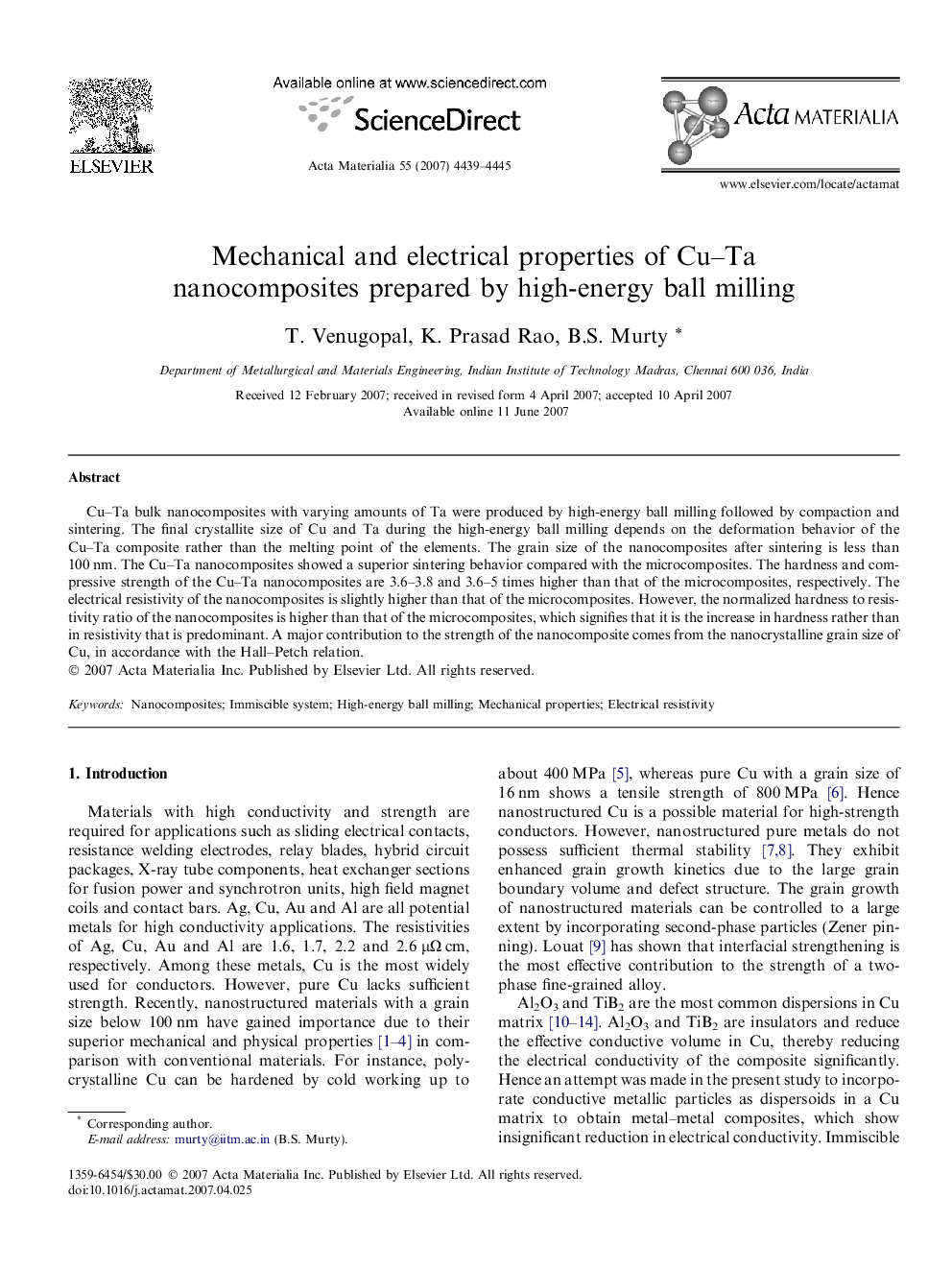| Article ID | Journal | Published Year | Pages | File Type |
|---|---|---|---|---|
| 10620841 | Acta Materialia | 2007 | 7 Pages |
Abstract
Cu-Ta bulk nanocomposites with varying amounts of Ta were produced by high-energy ball milling followed by compaction and sintering. The final crystallite size of Cu and Ta during the high-energy ball milling depends on the deformation behavior of the Cu-Ta composite rather than the melting point of the elements. The grain size of the nanocomposites after sintering is less than 100Â nm. The Cu-Ta nanocomposites showed a superior sintering behavior compared with the microcomposites. The hardness and compressive strength of the Cu-Ta nanocomposites are 3.6-3.8 and 3.6-5 times higher than that of the microcomposites, respectively. The electrical resistivity of the nanocomposites is slightly higher than that of the microcomposites. However, the normalized hardness to resistivity ratio of the nanocomposites is higher than that of the microcomposites, which signifies that it is the increase in hardness rather than in resistivity that is predominant. A major contribution to the strength of the nanocomposite comes from the nanocrystalline grain size of Cu, in accordance with the Hall-Petch relation.
Keywords
Related Topics
Physical Sciences and Engineering
Materials Science
Ceramics and Composites
Authors
T. Venugopal, K. Prasad Rao, B.S. Murty,
